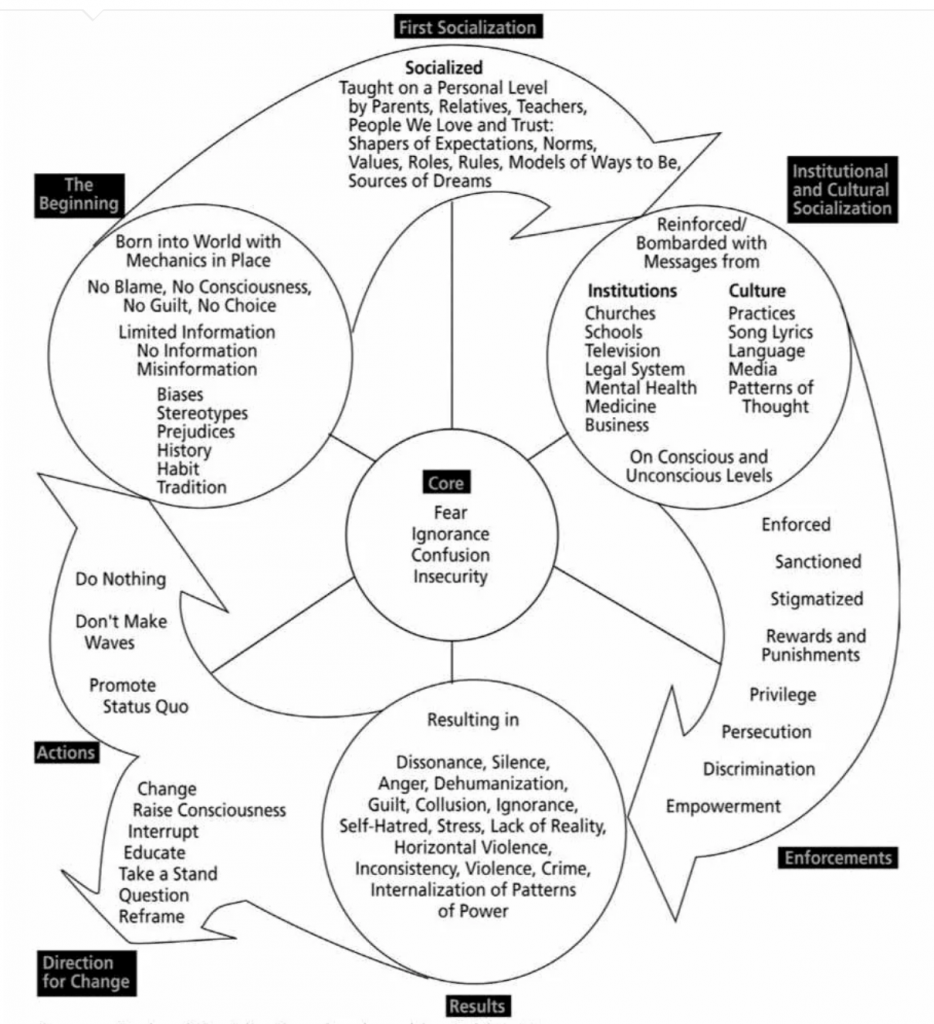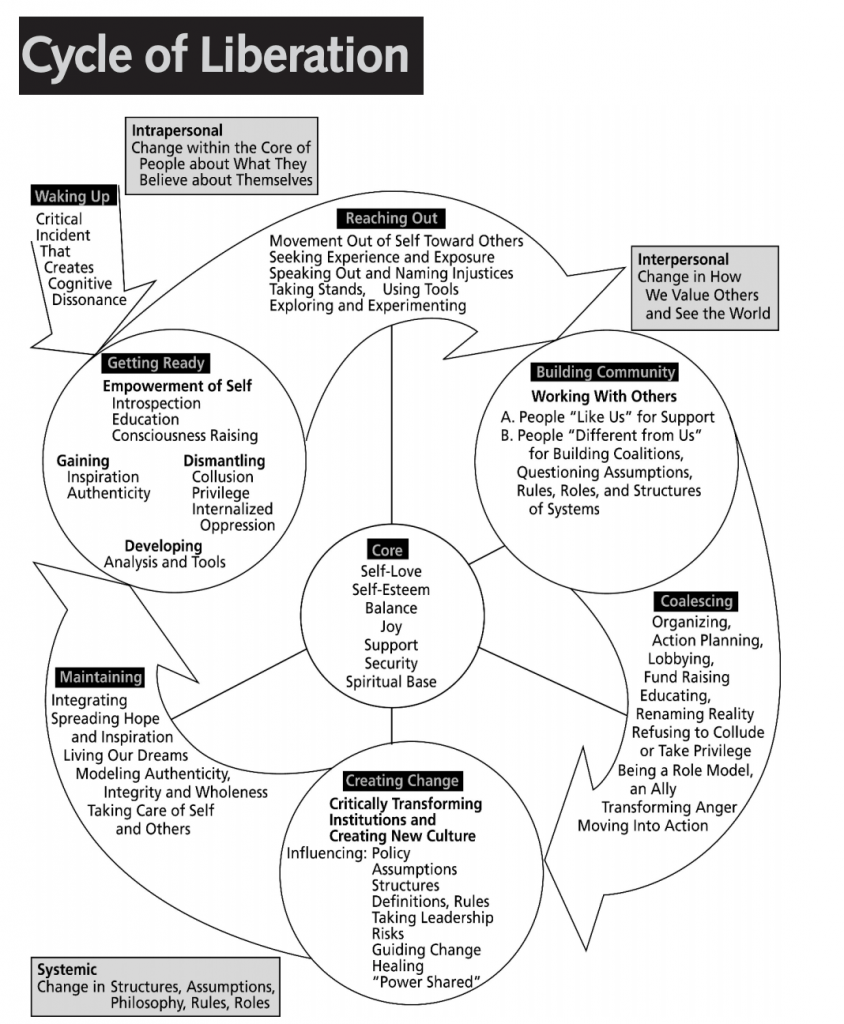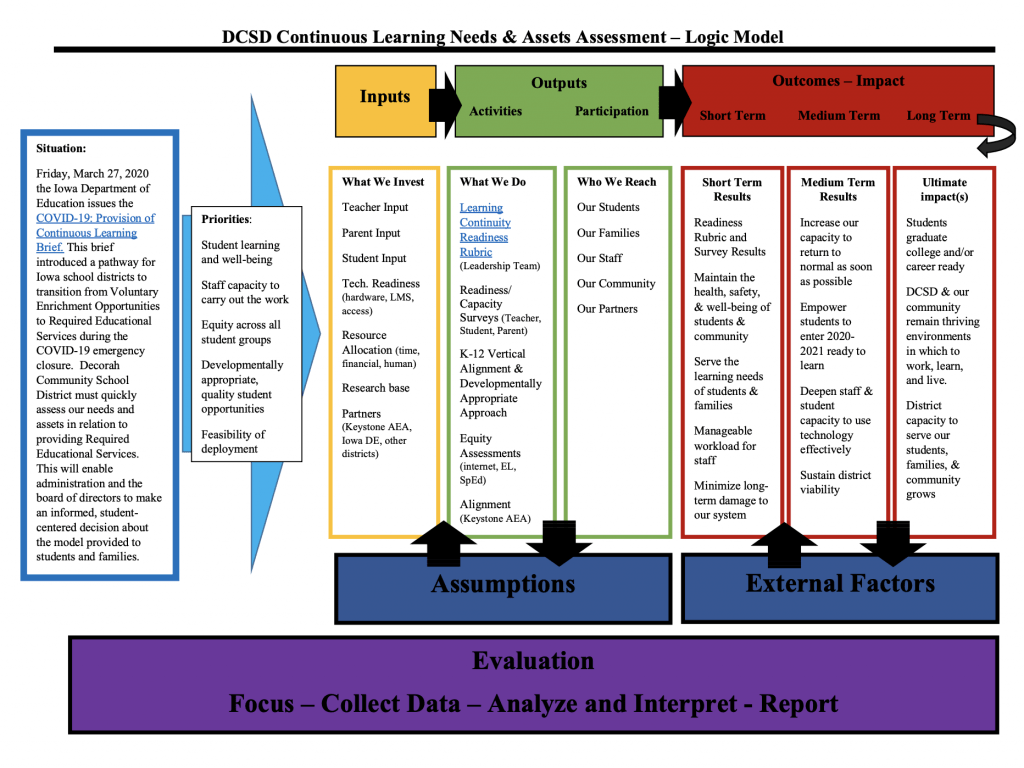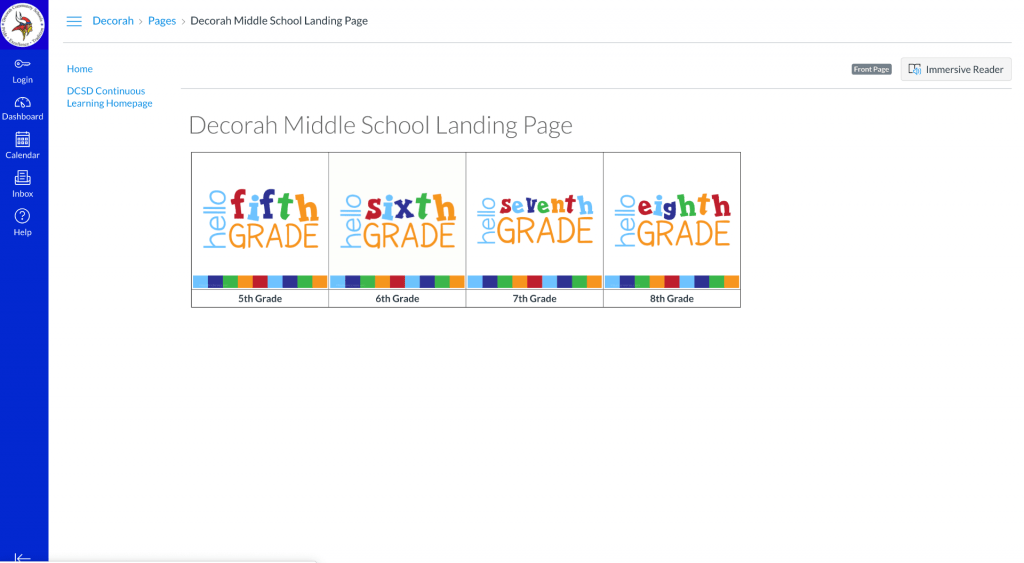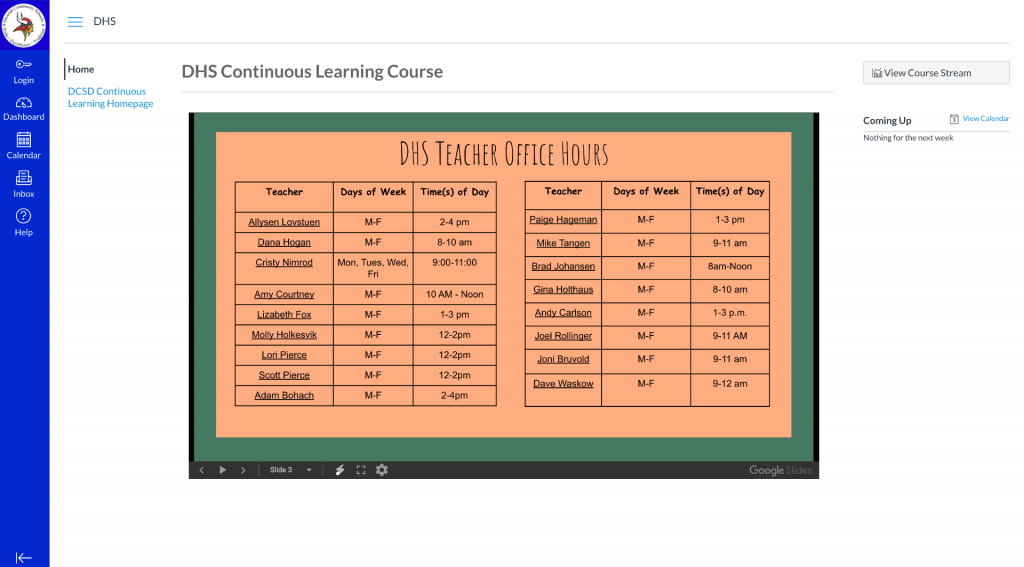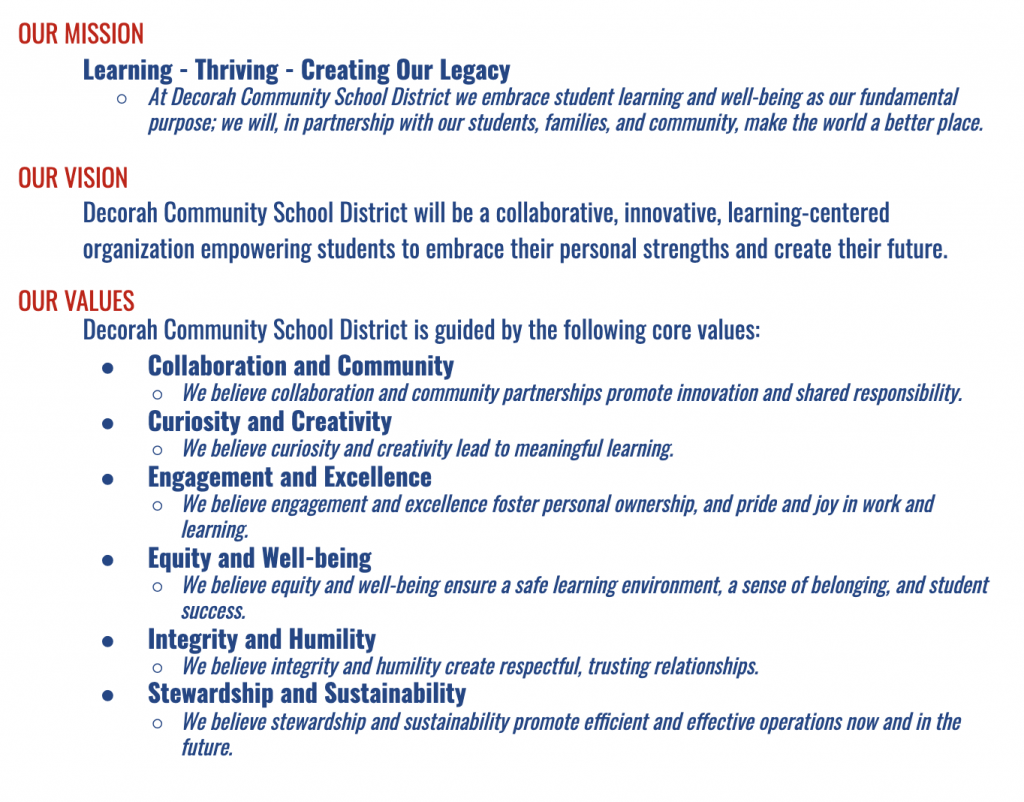I am disappointed by remarks about sinister agendas, a lack of transparency, and smuggled obscene material that have come out of the first few days of the 2022 General Session. It is important to look beyond these distracting comments and understand what does drive the work of educators and what already exists to provide transparency and rights to students and parents.
Iowa schools are required by law to teach the Iowa Core Curriculum. The Iowa Core was signed into law in 2008. The Core started with required standards for English Language Arts and Math. Required standards across subject matter have expanded under Governor Branstad and Governor Reynolds.
In an effort to provide transparency, Decorah Schools has dedicated time and resources to providing access to our curriculum through our website. As pictured below, anyone visiting our site can open the Academics header and access our Curriculum.
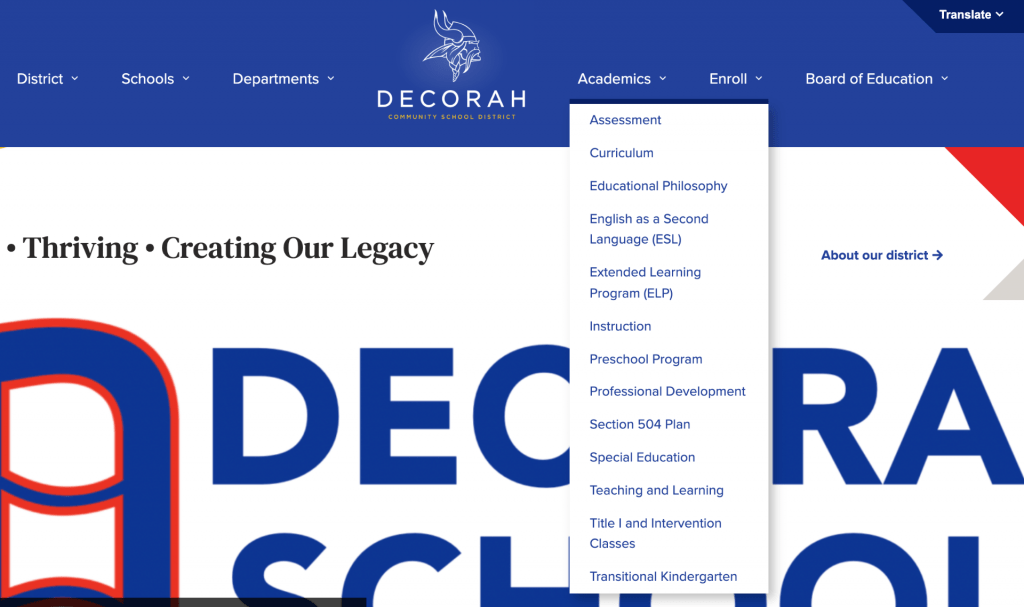
Once on the Curriculum page, visitors see a full alphabetical list of curricular areas from Career Technical Education to Word Languages. Curricular area pages include a description of our approach in this area and links to grade level standards. Those links take visitors directly to the Iowa Department of Education website, where they find the standards mandated by Iowa Code.
Some seem to be arguing that individual “sinister” administrators and teachers are working within that process to “smuggle in” “obscene” material. They might say that is what is being hidden from parents and what must be addressed. I read and hear certain lawmakers talking about a “Parent Bill of Rights” as a way to combat these alleged nefarious educators.
Iowa public school board policies already give parents and students rights and processes for avoiding personally objectionable content and/or materials. In Decorah, our 600 Series includes all policies for our Educational Program. The following links are examples of policies that include details for how parents can request exemption or alternative assignments in cases when content or materials are personally objectionable.
- 603.6 Religious-Based Exclusion from School Programs
- 602.7 Teaching of Controversial Issues: Academic Freedom
- 602.9 Health Curriculum
Additionally, like every public school district in Iowa, we have a policy detailing how a parent or group of parents can file a request for reconsideration of materials. That policy is also accessible through our website.
It seems to me that current efforts to frighten and censor educators have nothing to do with empowering parents to make decisions for their own children and everything to do with eliminating access to meaningful content and materials for other people’s children. I have a 12-year-old son. There are books that some people find objectionable or label as “obscene” that I will encourage him to read as he moves through middle school and high school. My son’s right to a meaningful school experience that challenges his thinking and exposes him to different people and life experiences is just as important as the rights available in existing policies to students and families that object to content and material my family values.
The right of parents to examine curriculum and materials exists in every school district. The right to exemption or alternative assignments exists. People can examine curriculum on our disitrict website and look at materials in person at our schools. They can contact any teacher or administrator by phone or email through our website. We are accessible for questions and conversations and are open to dialogue and feedback.
Iowa educators are selfless leaders in their communities. Our public schools strive to meet the unique needs of each student and family. Strawmen and demeaning scare tactics disrespect and dishonor the thousands of Iowa educators who work to empower students to achieve their full potential.
 Last night, the Iowa Senate passed
Last night, the Iowa Senate passed 